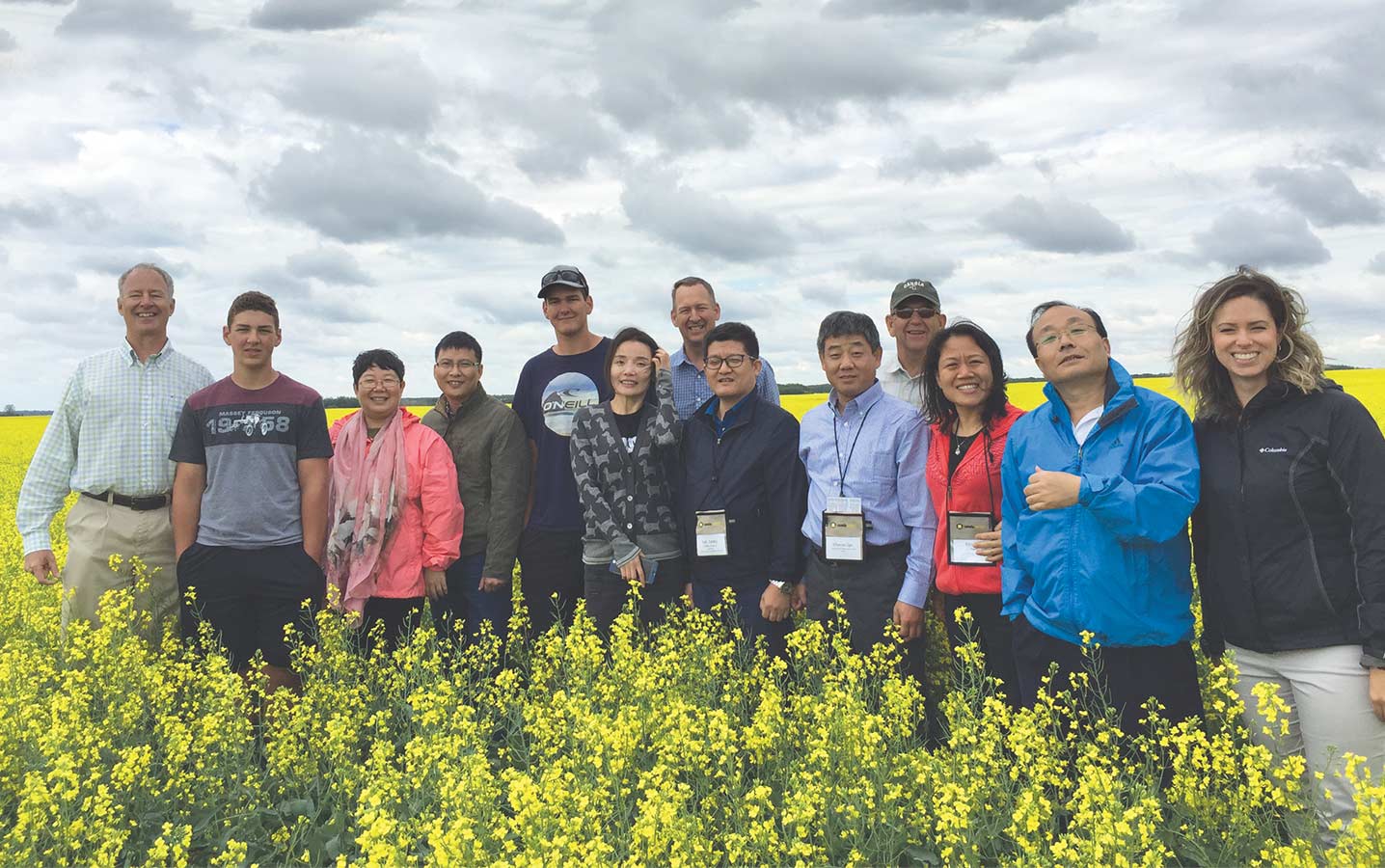CCC hosts Chinese feed experts to promote canola meal
In July, the Canola Council of Canada and Canada’s greater canola industry welcomed five experts from China’s livestock and aquaculture industry to learn more about the value of canola meal. “The individuals who came to Canada for this tour were specifically chosen for their expertise in animal nutrition and their ability to influence both their academic peers and the feed industry,” says Brittany Dyck, Canola Council of Canada (CCC) canola meal manager. “Professor [Lixia] Tian and Professor [Wutai] Guan are both located in Guangzhou in the province of Guangdong. A significant amount of exported Canadian canola meal and canola seed enter into this province. The meal is often used in aquaculture feed.”
Indeed, after the United States, China is the largest importer of canola and canola products such as meal. In 2017, Canadian canola exports to China included 4.5 million tonnes of seed, 688,000 tonnes of oil and one million tonnes of meal with a total value of $3.6 billion.
The tour’s aim was to connect with key Chinese influencers to help ensure buyers and end-users in China are more aware of the qualities of Canadian canola meal. It was also intended to build lasting relationships and to help delegates understand the decades of research conducted on canola meal usage.
The tour began with a look around the Port of Vancouver to see how canola seed and meal are moved offshore. Next up was some canola farm tours, visits with researchers at several University of Saskatchewan facilities, such as the Rayner Dairy Research and Teaching Facility and Canadian Feed Research Centre, and a visit to the University of Manitoba’s Department of Animal Science. Delegates, including aquaculture researchers, a swine nutritionist, a commodity trader and the director of China’s Animal Husbandry Group, had a chance to interact with Canadian researchers specializing in livestock production and feed ingredient processing. The tour concluded at the Agriculture and Agri-Food Canada Research Centre in Sherbrooke, Quebec.
“We wanted to give individuals a first-hand experience on all things Canadian canola, and to truly differentiate Canadian canola meal,” says Dyck. “Canadian canola meal can be confused for rapeseed meal, and the two are not equal. We know that Canadian canola meal contains very low levels of glucosinolate and that rapeseed meal, particularly in China, can contain high amounts of glucosinolate. This can be detrimental to animal performance. We also want to differentiate Canadian canola meal from other canola/rapeseed meals entering China from other markets. The individuals who came on this trip left Canada knowing exactly what to expect in the quality of our product and how to maximize the use of this protein source.”
Randy Heuchert, who farms 20km south of Saskatoon near Clavet, hosted one of the farm tours. “I was impressed how eager the delegation was to learn about canola,” he says. “It was a small group, so it was easy to interact with them. They asked very good questions about canola.”
Heuchert says he and his family put a lot of energy and work into these farm tours. In preparation, he seeded a pot of canola every week over several months to show his visitors canola at various stages – cotyledons, bolting, flowering, podding and dry material that comes out the combine. “We also had our full line-up of shiny and clean canola machinery,” he says. “They asked how much each piece was worth and converted the costs to their currency.”
Lixia Tian, professor of aquaculture nutrition at Sun Yan-Sen University, says the visit to Heuchert’s farm was the most impressive part of the tour. “I found the mechanization is highly-automated and very effective, and the planting management is really scientific,” she says. “The other impressive thing was the research in Canada about the application of canola meal in animal feeds. It was thorough and deep.”
Overall, Tian says the arrangement of the tour was perfect. “I have a better understanding about the nutrition profile of canola meal and the application of canola meal in the animal feeds,” she explains. “In the future, the application of canola meal in the feed of aquatic animals will be more wide. Until now we have used it in the feed of tilapia and grass carp, and I hope I can try to apply canola meal into the feed of shrimp and marine fish.”
This tour, says Dyck, complements the various research and demonstration trials that CCC has held in China to demonstrate how Canadian canola meal fits into the livestock and aquaculture rations of Chinese producers.
Plans are in the works to visit the delegates on an annual basis. “We’ll continue to provide these experts with the newest research findings on canola meal,” Dyck says. This will include research funded through the Canola Agri-Science Cluster, with funding provided by Agriculture and Agri-Food Canada, the Canola Council of Canada, Alberta Canola, SaskCanola and the Manitoba Canola Growers. “The visits will also serve as a resource for the CCC on market changes, acceptance and use of Canadian canola meal.”






